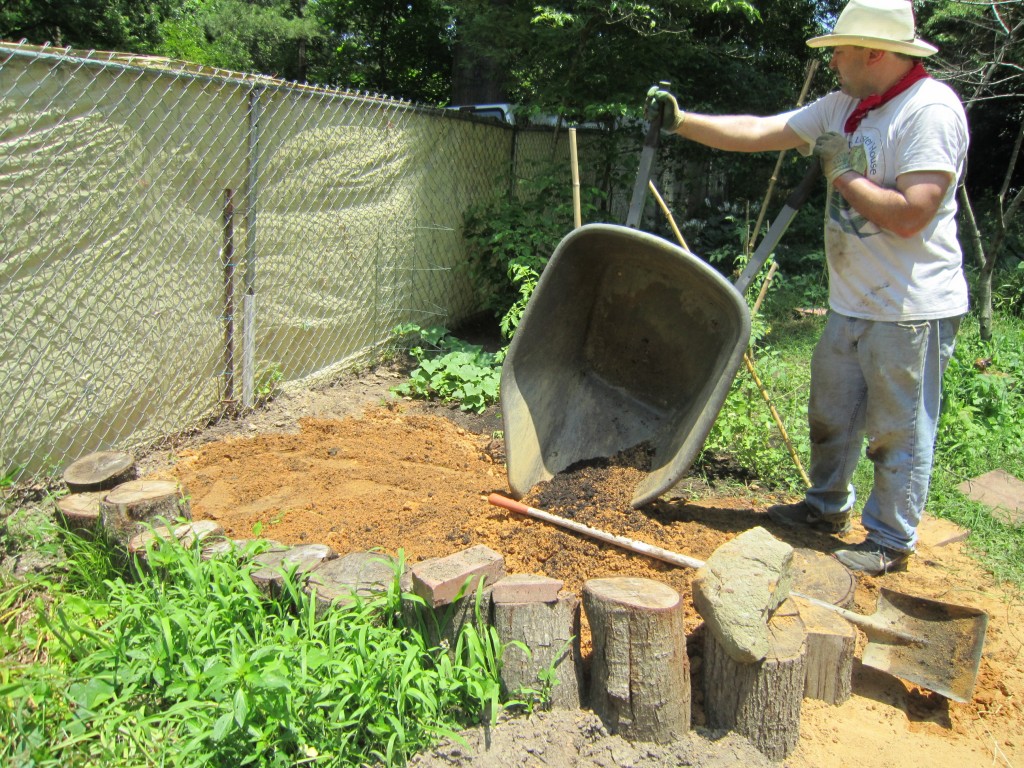I’ve had a sweet potato obsession for a number of years now. There is the occasional week where I’ll eat so many that my skin will turn orange. (Now that Syracuse is in the ACC, I’ll have to be careful not to look like Otto the Orange if I ever get to go to a UNC-Syracuse game. My head is fairly round.) My doctor reinforced this addiction when she told me during my last physical that I should substitute sweet potatoes for regular potatoes in my diet, as they are better for blood sugar. All I could do was turn my head and smile.
Naturally I bring this obsession to the garden. Over the last few years we’ve grown them, but I want to really maximize our yield in 2013. This year’s goal is to fill our root cellar with enough sweet potatoes to feed the entire block, or use them as a food source in case of a post-industrial collapse. Those things keep for over a year at a time. You laugh now, but some day, on the brink of starvation, you might be eating sweet potato fries from our solar oven.
The first step involved research. I knew that North Carolina leads the nation in sweet potato production with around 40% of the nation’s yield. Most of them are grown down east, in the land of vinegar BBQ. They aren’t hard to miss if you’re ever traveling east of I-95, where you’ll pass by enormous irrigated fields, green vines basking in the hot sun. This makes sense because the sweet potato is a tropical plant, indigenous to Central America. Lots of sun and water are essential.
The soil in our Triassic Basin region differs greatly from the soil down east, which is much sandier. This eastern soil, called Cecil Sandy Loam, is a dirt/sand mix with a layer of red clay on the bottom. With this in mind, I created a new sweet potato patch, using 40% leaf compost, 40% sand, and 20% red clay.
I mixed the compost and the sand together, and placed it on top of the clay. I also made sure the patch was deep and in a well-drained location. A couple of sources indicated that the soil should be at least a couple of feet deep, so I piled our sweet potato patch up to 30 inches.
Next we bought a few sweet potatoes at Whole Paycheck and then cut them into pieces, planting the sections that had “eyes” on them. It took a couple of weeks for the vines to start poking through. A month later, they seem to be doing nicely, unaffected (as far as we can tell) by the rot brought forth by last month’s deluge. Wish we could say the same thing about our tomatoes!
This weekend we’ll be fertilizing them some, using a fertilizer that has a higher concentration of potassium and phosphate with lower nitrogen levels. If you have too much nitrogen, the vines will grow abundantly, but the potatoes will be puny when you dig them up.
With sweet potatoes, the waiting is the hardest part. We like to give them 120 days to harvest, which means we’ll be harvesting in October. It’s so much fun digging them up with the shovel, although I always end up cutting open a few by mistake. After the harvest we have to let them cure in the cellar for a couple of months. They need this time to become sweet and luscious. That means they’ll be ready for Christmas. I look forward to stuffing one in Shawnna’s stocking.



